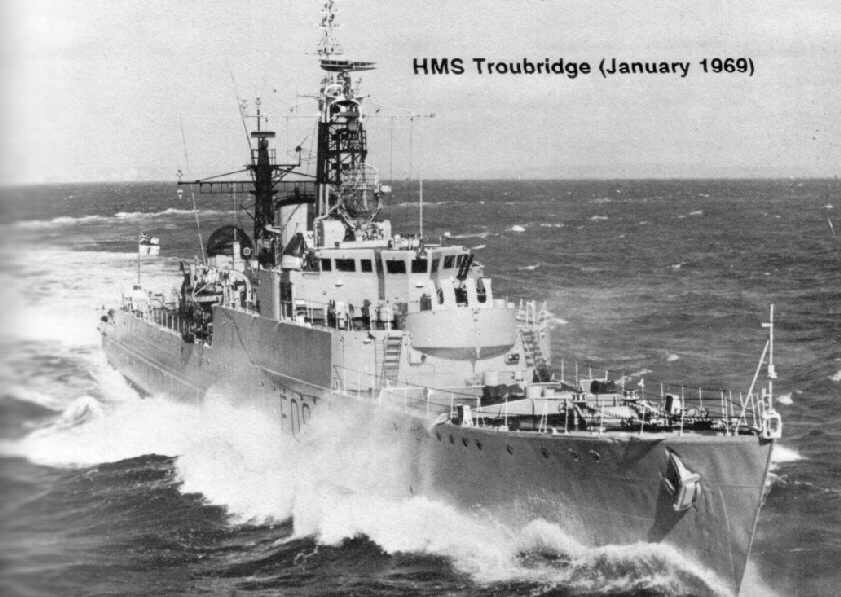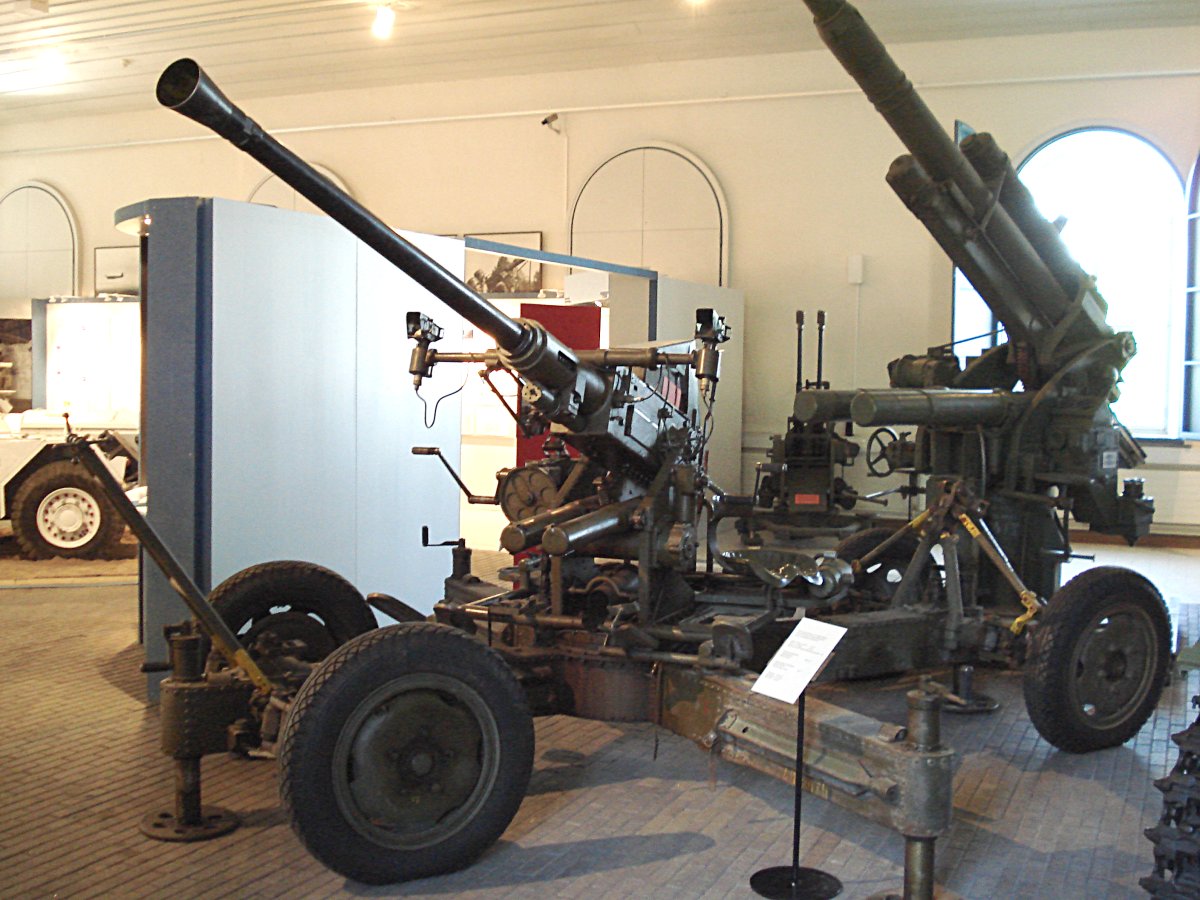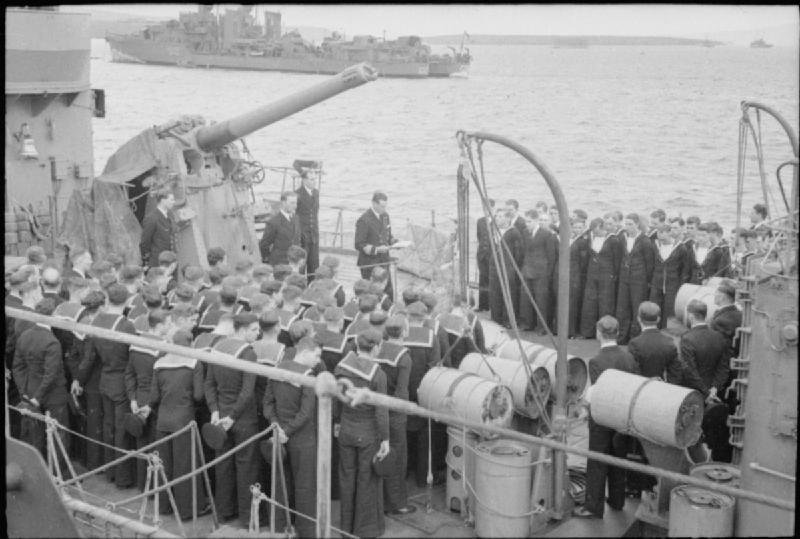|
Q And R-class Destroyer
The Q and R class was a class of sixteen War Emergency Programme destroyers ordered for the British Royal Navy in 1940 as the 3rd and 4th Emergency Flotilla. They served as convoy escorts during World War II. Three Q-class ships were transferred to the Royal Australian Navy upon completion, with two further ships being handed over in 1945. ''Roebuck'' had the dubious honour of being launched prematurely by an air raid at Scotts shipyard in Greenock, her partially complete hulk lying submerged in the dockyard for nine months before it was salvaged and completed. Design The Q and R class were repeats of the preceding , but reverted to the larger J-, K- and N-class hull to allow for the inevitable growth in topweight. As they had fewer main guns than the J, K and Ns, some magazine space was replaced by fuel bunkers, allowing some to be made at , rather than the of their predecessors. Like the O and Ps, they were armed with what weapons were available: guns on single mounting ... [...More Info...] [...Related Items...] OR: [Wikipedia] [Google] [Baidu] |
HMS Quilliam (G09)
HMS ''Quilliam'' (G09) was a Q-class destroyer serving in the Royal Navy from 1942 to 1945. She was then transferred to the Royal Netherlands Navy, where she was commissioned as HNLMS ''Banckert'' (D801) from until 1957. Construction The ship was laid down by R. and W. Hawthorn, Leslie and Company, Limited, at Hebburn-on-Tyne on 19 August 1940, launched on 29 November 1941 and commissioned on 22 October 1942. She was named after Manx Lieutenant (later Captain) John Quilliam RN, First Lieutenant of at the Battle of Trafalgar. Operational history Royal Navy ''Quilliam'' was involved in wartime operations in both the Atlantic and Pacific Oceans. On 20 May 1945, while taking part in Operation Iceberg ( the Invasion of Okinawa), ''Quilliam'' was involved in a collision with the British aircraft carrier , which left the destroyer with a heavily damaged bow. She was out of service for repairs when World War II ended. Royal Netherlands Navy ''Quilliam'' was one of six Q-class ... [...More Info...] [...Related Items...] OR: [Wikipedia] [Google] [Baidu] |
Royal Australian Navy
The Royal Australian Navy (RAN) is the navy, naval branch of the Australian Defence Force (ADF). The professional head of the RAN is Chief of Navy (Australia), Chief of Navy (CN) Vice admiral (Australia), Vice Admiral Mark Hammond (admiral), Mark Hammond. The Chief of Navy is also jointly responsible to the Minister for Defence (Australia), Minister for Defence (MINDEF) and the Chief of the Defence Force (Australia), Chief of the Defence Force (CDF). The Department of Defence (Australia), Department of Defence, which is a part of the Australian Public Service, administers the ADF, and ergo, the Royal Australian Navy. In 2023, the Surface Fleet Review was introduced to outline the future of the Navy. The navy was formed in 1901 as the Commonwealth Naval Forces (CNF) through the amalgamation of the colonial navies of Australia following the federation of Australia. Although it was originally intended for local defence, it became increasingly responsible for regional defence as the ... [...More Info...] [...Related Items...] OR: [Wikipedia] [Google] [Baidu] |
Bari
Bari ( ; ; ; ) is the capital city of the Metropolitan City of Bari and of the Apulia Regions of Italy, region, on the Adriatic Sea in southern Italy. It is the first most important economic centre of mainland Southern Italy. It is a port and university city as well as the city of Saint Nicholas. The city itself has a population of 315,473 inhabitants, and an area of over , while the urban area has 750,000 inhabitants. Its Metropolitan City of Bari, metropolitan province has 1.2 million inhabitants. Bari is made up of four different urban sections. To the north is the closely built old town on the peninsula between two modern harbours, with the Basilica di San Nicola, Basilica of Saint Nicholas, the Cathedral of San Sabino (1035–1171) and the Castello Normanno-Svevo (Bari), Norman-Swabian Castle, which is now also a major nightlife district. To the south is the Murat quarter (erected by Joachim Murat), the modern heart of the city, which is laid out on a rectangular grid-plan ... [...More Info...] [...Related Items...] OR: [Wikipedia] [Google] [Baidu] |
Hawthorn Leslie And Company
R. & W. Hawthorn, Leslie and Company, Limited, usually referred to as Hawthorn Leslie, was a shipbuilder and locomotive manufacturer. The company was founded on Tyneside in 1886 and ceased building ships in 1982. History The company was formed by the merger of the shipbuilder A. Leslie and Company in Hebburn with the locomotive works of R and W Hawthorn at St. Peter's in Newcastle upon Tyne in 1886. The company displaced its locomotive manufacturing interests in 1937 to Robert Stephenson and Company, which became ''Robert Stephenson and Hawthorns Ltd.'' Perhaps the most famous ship built by the Company was HMS ''Kelly'', launched in 1938 and commanded by Lord Louis Mountbatten. In 1954, the shipbuilding and marine engine activities were put into separate subsidiaries, Hawthorn Leslie (Shipbuilders) Ltd. and Hawthorn Leslie (Engineers) Ltd. In 1968 the Company's shipbuilding interests were merged with that of Swan Hunter and the Vickers Naval Yard to create Swan Hunter & ... [...More Info...] [...Related Items...] OR: [Wikipedia] [Google] [Baidu] |
Type 15 Frigate
The Type 15 frigate was a class of British anti-submarine frigates of the Royal Navy. They were conversions based on the hulls of World War II-era destroyers built to the standard War Emergency Programme "utility" design. History By 1945 the wartime "utility" vessels were obsolescent as destroyers due to their relatively small size and makeshift armament. Future construction would be based on ever larger vessels, such as the and . Rapid advances in German U-boat technology with the Type XXI and Type XXVI rendered even some of the most modern Royal Navy escorts obsolete. This technology was being put into production by the Soviet Navy in the form of the . The Royal Navy began designing and constructing new fast anti-submarine frigates of the Type 12 and Type 14 design to counter this threat. However, it would be some time before these vessels could be brought into service and budget constraints limited the number of new hulls that could be constructed. The solution to the ... [...More Info...] [...Related Items...] OR: [Wikipedia] [Google] [Baidu] |
Swan Hunter
Swan Hunter, formerly known as Swan, Hunter & Wigham Richardson, is a shipbuilding design, engineering, and management company, based in Wallsend, Tyne and Wear, England. At its apex, the company represented the combined forces of three powerful shipbuilding families: Swan, Hunter and Wigham Richardson. The company was responsible for some of the greatest ships of the early 20th century, most famously which held the Blue Riband for the fastest crossing of the Atlantic, and which rescued survivors from . In 2006 ''Swan Hunter'' ceased vessel construction on Tyneside, but continues to provide design engineering services. History Swan & Hunter was founded by George Burton Hunter, who formed a partnership with the widow of Charles Sheridan Swan (the owner of a Wallsend Shipbuilding business established in 1852 by Charles Mitchell) under the name in 1880. In 1903, C.S. Swan & Hunter merged with Wigham Richardson (founded by John Wigham Richardson as Neptune Works in 186 ... [...More Info...] [...Related Items...] OR: [Wikipedia] [Google] [Baidu] |
Huff-Duff
High-frequency direction finding, usually known by its abbreviation HF/DF or nickname huff-duff, is a type of radio direction finder (RDF) introduced in World War II. High frequency (HF) refers to a radio band that can effectively communicate over long distances; for example, between U-boats and their land-based headquarters. HF/DF was primarily used to catch enemy radios while they transmitted, although it was also used to locate friendly aircraft as a navigation aid. The basic technique remains in use as one of the fundamental disciplines of signals intelligence, although typically incorporated into a larger suite of radio systems and radars instead of being a stand-alone system. In earlier RDF systems, the operator mechanically rotated a loop antenna or solenoid and listened for peaks or nulls in the signal to determine the bearing to the transmitter. This took considerable time, on the order of a minute or more. Radio operators could avoid being located by keeping their messag ... [...More Info...] [...Related Items...] OR: [Wikipedia] [Google] [Baidu] |
Bofors 40 Mm Automatic Gun L/60
The Bofors 40 mm Automatic Gun L/60 (often referred to simply as the "Bofors 40 mm gun", the "Bofors gun" and the like, see #Name, name) is an Anti-aircraft warfare, anti-aircraft autocannon, designed in the 1930s by the Swedish arms manufacturer AB Bofors. The gun was designed as an intermediate anti-aircraft gun, filling the gap between fast firing close-range small calibre anti-aircraft guns and slower firing long-range high calibre anti-aircraft guns. For its time, the Bofors 40 mm L/60 was perfectly suited for this role and outperformed competing designs in the years leading up to World War II in both effectiveness and reliability. It entered the export market around 1932 and was in service with 18 countries by 1939. Throughout World War II it became one of the most popular and widespread medium-weight anti-aircraft guns. It was used by the majority of the western Allies of World War II, Allies and some Axis powers such as Nazi Germany and Hungary. In the po ... [...More Info...] [...Related Items...] OR: [Wikipedia] [Google] [Baidu] |
U And V-class Destroyer
The U and V class was a class of sixteen destroyers of the Royal Navy launched in 1942–1943. They were constructed in two flotillas, each with names beginning with "U-" or "V-" (although there was a return to the pre-war practice of naming the designated flotilla leader after a famous naval figure from history to honour the lost ships ''Grenville'' and ''Hardy''). The hull was nearly identical to the preceding ships of the S and T classes, but the U and V class ships had different bridge and armament fits. The flotillas constituted the 7th Emergency Flotilla and 8th Emergency Flotilla, built under the War Emergency Programme. These ships used the Fuze Keeping Clock HA Fire Control Computer. Notable actions Four ships, ''Verulam'', ''Venus'', ''Vigilant'' and ''Virago'', formed part of the 26th Destroyer Flotilla that ambushed and sank the , off Sumatra. U class * , flotilla leader, built by Swan Hunter, Tyneside, laid down 1 November 1941, launched 12 October 1942, and comp ... [...More Info...] [...Related Items...] OR: [Wikipedia] [Google] [Baidu] |
Minesweeper
A minesweeper is a small warship designed to remove or detonate naval mines. Using various mechanisms intended to counter the threat posed by naval mines, minesweepers keep waterways clear for safe shipping. History The earliest known usage of the naval mine dates to the Ming dynasty.Needham, Volume 5, Part 7, 203–205. Dedicated minesweepers, however, only appeared many centuries later during the Crimean War, when they were deployed by the British. The Crimean War minesweepers were rowboats trailing Grappling hook, grapnels to snag mines. Minesweeping technology picked up in the Russo-Japanese War, using aging torpedo boats as minesweepers. In Britain, naval leaders recognized before the outbreak of World War I that the development of sea mines was a threat to the nation's shipping and began efforts to counter the threat. Sir Arthur Wilson, 3rd Baronet, Sir Arthur Wilson noted the real threat of the time was a blockade aided by mines and not an invasion. The function of the ... [...More Info...] [...Related Items...] OR: [Wikipedia] [Google] [Baidu] |
Fuze Keeping Clock
The Fuze Keeping Clock (FKC) was a simplified version of the Royal Navy's High Angle Control System analogue fire control computer. It first appeared as the FKC MkII in destroyers of the 1938 ,''Tribal Class Destroyers'', Hodges, p. 27 while later variants were used on sloops, frigates, destroyers, aircraft carriers and several cruisers. The FKC MkII was a non- tachymetric anti-aircraft fire control computer. It could accurately engage targets with a maximum speed of . Operation The FKC received vertical reference information from a ''Gyro Level Corrector'' and aircraft altitude, range, direction, and speed input information from the ''Rangefinder-Director'', and output to the guns the elevation and deflection data needed to hit the target, along with the correct fuze timing information, so that the shells fired would explode in the vicinity of the target aircraft. Most guns controlled by the FKC had ''Fuze Setting Pedestals'' or ''Fuze Setting Trays'' where the correct fuze ti ... [...More Info...] [...Related Items...] OR: [Wikipedia] [Google] [Baidu] |
J-, K- And N-class Destroyer
The J, K and N class consisted of 24 destroyers built for the Royal Navy beginning in 1938. They were a return to a smaller vessel, with a heavier torpedo armament, after the that emphasised guns over torpedoes. The ships were built in three flotillas or groups, each consisting of eight ships with names beginning with "J", "K" and "N". The flag superior of the pennant numbers changed from "F" to "G" in 1940. The ships were modified throughout their wartime service, particularly their anti-aircraft (AA) guns; they were also fitted with radar. Design history The design was intended as a smaller follow-on from the preceding Tribal class. In a departure from all previous Royal Navy destroyers, the design used a two boiler room layout. This reduced hull length and allowed for a single funnel, both reducing the profile and increasing the arcs of fire of the light anti-aircraft (AA) weapons. It also increased vulnerability, as there were now two adjacent large compartments with the ... [...More Info...] [...Related Items...] OR: [Wikipedia] [Google] [Baidu] |








